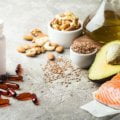So, “GMA” spoke to Palak Patel, a chef and educator from the Institute of Culinary Education, to learn the best practices for hen prep.
Breaking it all down
Why is it unsanitary to clean an uncooked hen?
Washing an uncooked bird can cause bacteria on the bird to splash and cling to easy surfaces, together with your palms, inflicting move-contamination. Cut out any steps of washing chicken from the recipe completely. Just cooking hen thoroughly gets rid of harmful bacteria and pathogens.
What’s the most secure manner to address raw hen?
The safest way to handle uncooked chicken is to prevent raw fowl and its juices from touching different ingredients, particularly fruits and veggies. Before and after handling raw poultry, make sure to clean your palms, surfaces, knives, tools, and slicing boards with warm, soapy water for 20 seconds.
(MORE: 7 methods to head no-waste inside the kitchen: Turn scraps into stars and ‘consume unpleasantly’)
Where the chicken is placed in the refrigerator and freezer is important, as chicken juice tends to leak outside of its container. This can cause contamination if it touches your product or cooked meals. Place the bird bundle in a bag or discard it and place it in a container. Alternatively, place it on a plate, then cover it, and usually store it on the lowest shelf of your fridge.
How can you ensure an uncooked bird is well wiped clean and sanitary?
After buying the chicken, keep it at the right temperature in the refrigerator on the lowest shelf. If the bird is frozen, thaw it in the refrigerator overnight, not on the kitchen counter. At room temperature, chicken and uncooked meat can develop dangerous microorganisms.
Use thawed chook within 48 hours and do not place it returned into the freezer after defrosting—pre-prep all components, which includes chopping and pre-heating pans, before dealing with uncooked chicken.
Pro Tip: Invest in separate reducing forums, one for meat best and the other for produce. Use tongs to address raw and cleaned equipment for cooked meat. Don’t wash the chicken; wash your fingers earlier than and after handling the chook. Limit coping with raw food as much as possible throughout prep and cooking. Once the chook is cooked, the threat of food poisoning is long gone; however, there’s still a chance for contamination from ingesting the raw produce if there is any co-infection at some point of cooking. It’s not secure to refreeze chicken that has been defrosted.
The great ways to soundly prepare dinner chicken
To prepare dinner, birds frivolously put together a fowl breast by pounding it to obtain even thickness. Place chicken breasts on a sheet of plastic wrap, cowl them with every other sheet of wrap, and provide them a few whacks with a kitchen mallet, focusing on the thicker end. There’s no need to beat them skinny, just even them out a touch.
(MORE: 4 must-attempt James Beard Foundation recipes, from bird inventory to chocolate avocado pudding)
Start patting hen dry — you will get a far higher sear and a better chance of getting that pleasant golden shade. For dry surfaces, ensure a seal from the out-of-doors to preserve the juices’ interior, keeping the fowl juicy. Rely on a proper thermometer. A beneath-cooked breast is unsafe, but an overcooked one isn’t always tasty. Use an instantaneous-study thermometer to ensure the thickest end reaches 155 stages. Carry-over warmness will take it to 165 levels; without drying them out, that’s safe.
Pro tip: A virtual thermometer reads temperatures correctly and removes any guesswork. Marinating fowl breasts every day is the best way to add taste. Then, sauté them in a skillet. Boneless, skinless bird breasts are commonplace because they’re clean to address and require very little cooking time. They do not have a good deal of flavor, so add a marinade ahead or surround them with lots of flavors after they are done cooking.












